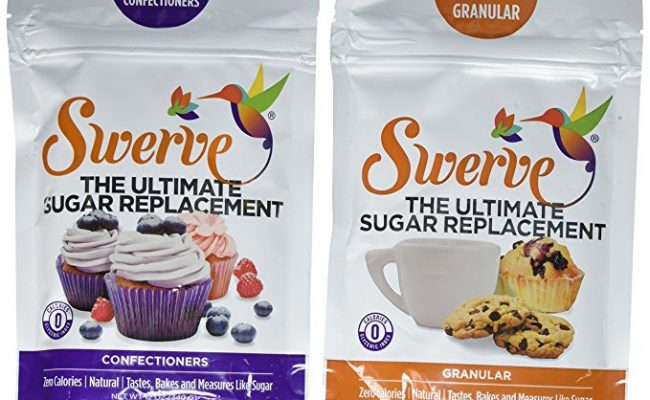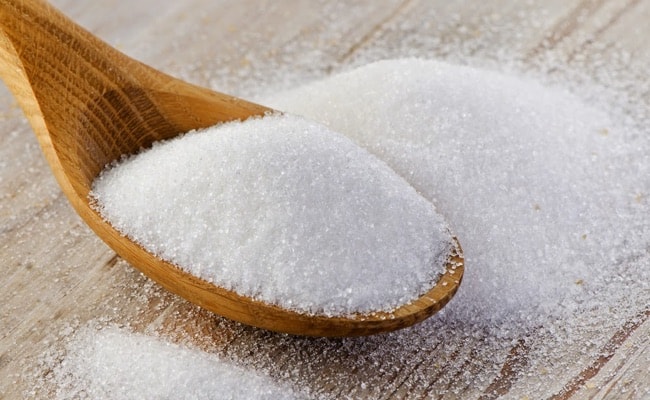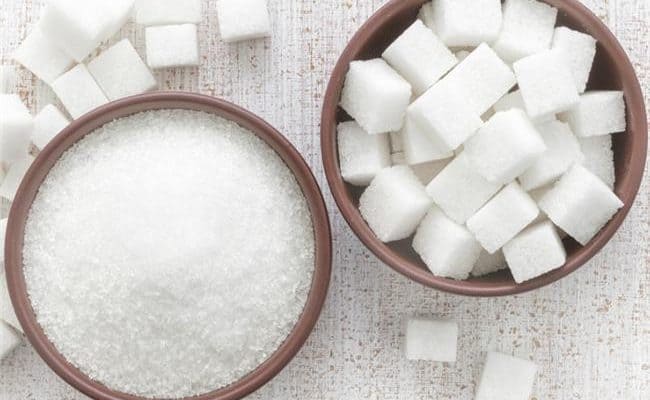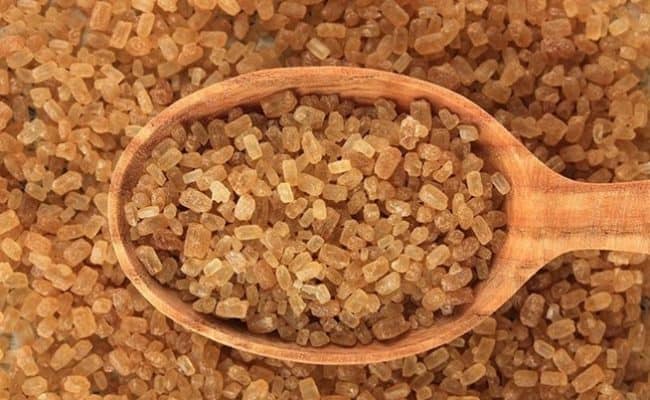
The amount of sugar we are consuming is alarming. In fact, according to University of California San Francisco, the average American consumes about 66 pounds of added sugar per year.
Sugar is obviously found in candy, sweets, baked goods, snacks and sugary drinks. Cutting these out from your diet will lower your sugar intake. However, sugar is a common ingredient in some foods you would not suspect.
Sugar can be added to canned soups, sauces, bread, frozen dinners, frozen pizza and other savory foods. Therefore, consuming a variety of packaged foods can quickly add up on added sugar intake without you realizing it.
For most people, having a small amount of added sugar as part of a balanced diet is ok. The concern is getting excessive sugar may increase risk for weight gain, type 2 diabetes, cardiovascular disease and more.
The good news is some research has shown added sugar intake has gone down. The bad news is most people are still consuming too much sugar and still need to cut down their intake.
How much sugar per day?
The World Health Organization (WHO) recommends limiting added sugar to less than 10% of daily calorie intake. For example, someone who consumes a 2,000 calorie diet, their added sugar intake should be no more than 200 calories.
Added sugar vs Natural sugar
Fruits, vegetables, whole grains, dairy and legumes naturally have carbohydrates. Of these foods, milk and fruits have the highest natural sugar amounts.
For example, a medium apple can have around 19 grams of sugar. A cup of berries can have about 15 grams of sugar. These foods naturally have sugar in them, there is no sugar added.
What is added sugar?
How is this different than a sweet beverage that provides 19 grams of sugar? Fruit provides fiber which changes the way your body absorbs the sugar.
Fruit also provides a good source of vitamins, minerals and antioxidants. Dairy provides a good source of protein, vitamins and minerals.
Daily sugar recommendations will limit the amount of added sugars in the diet, not naturally occurring sugars.
These foods provide much more than sugar; they are nutrition power houses. That is one of the main differences between foods with natural sugar and foods that have added sugar.
Foods that have added sugar are usually high in sugar, calories and void of any other nutrients.
Added sugar recommendation
Over the past few decades, Americans have steadily increased the amount of added sugar they consume.
The good news according to a 2011 study (1) is Americans are starting to now lower their added sugar intake.
The bad news is we still have a ways to go to meet the recommended added sugar intake. Between 1999-2000 research from over 40,000 people provided on average Americans consumed about 100 grams of added sugar per day.
Between 2007-2008 the amount of average added sugar intake dropped to about 76.7 grams of added sugar per day.
Researchers found the main reason for the drop in added sugar was the decrease in soda consumption.
The American Heart Association (2) (AHA) and other health agencies suggest limiting added sugar up to 25 grams per day for women and up to 36 grams per day for men.
This translates to about 6 teaspoons or 100 calories of added sugar per day for women and about 9 teaspoons or 150 calories per day for men.
The data from 2007-2008 suggest on average Americans consume about 76.7 grams of added sugar which is still much more than the recommended intake.
The World Health Organization (WHO) recommends limiting added sugar to less than 10% of daily calorie intake. For example, someone who consumes a 2,000 calorie diet, their added sugar intake should be no more than 200 calories.
Finding sugar in the nutrition label
In 2016, the FDA (3) set guidelines for new rules for nutrition labeling. One of the changes is food labels will have to include added sugars on ingredient labels along with the percent Daily Value.
In the future, this will hopefully help consumers be aware of how much sugar is added to foods.
Looking on an ingredient list, you may not find the word “sugar”.
Sugar may be hidden in other words such as: glucose, sucrose, fructose, corn syrup, fruit juice concentrate, etc. These are all considered added sweeteners that contribute to added sugars.
Also, be aware if something claims to be sugar free, it could still have up to 0.5 grams of sugar in a serving.
If you consume a few servings, this could equal a few grams of added sugar without you realizing it.
See also: Best Liquid Sugar Substitutes
How to lower your sugar intake
One of the first steps for lowering your sugar intake is cutting out sweetened beverages. These are empty calorie sources, and the sugar from these beverages gets absorbed quickly into the blood stream.
Other empty calorie sources of added sugars like sweets and baked goods are obvious choices to cut out.
At the grocery store or in your own cupboard, look through ingredient labels and nutrition fact labels on food.
Most packaged foods contain added sugars for either a flavor enhancer, improve shelf life or simply just as a cheap ingredient filler.
Cutting out processed foods that have added sugars can help you further lower your grams of sugar.
Conclusion
Excess added sugar in the diet can increase risk for weight gain and many chronic diseases. Lowering intake of sugar is recommended for overall health and weight regulation.
Cutting out added sugar can be hard because sugar cravings are real, much like drug cravings (4). Lowering your sugar intake may be hard, but it is worth it for your health.
Current recommendations suggest women limit added sugar intake to less than 25 grams per day and 36 grams per day for men.
A 12-ounce container of soda alone can provide over 40 grams of sugar. Current estimates suggest even though Americans have cut back on added sugar intake, most of us are still above the recommended intake.










